Fall 2025 Schedule
Dr. Don Dixon, Vanderbilt
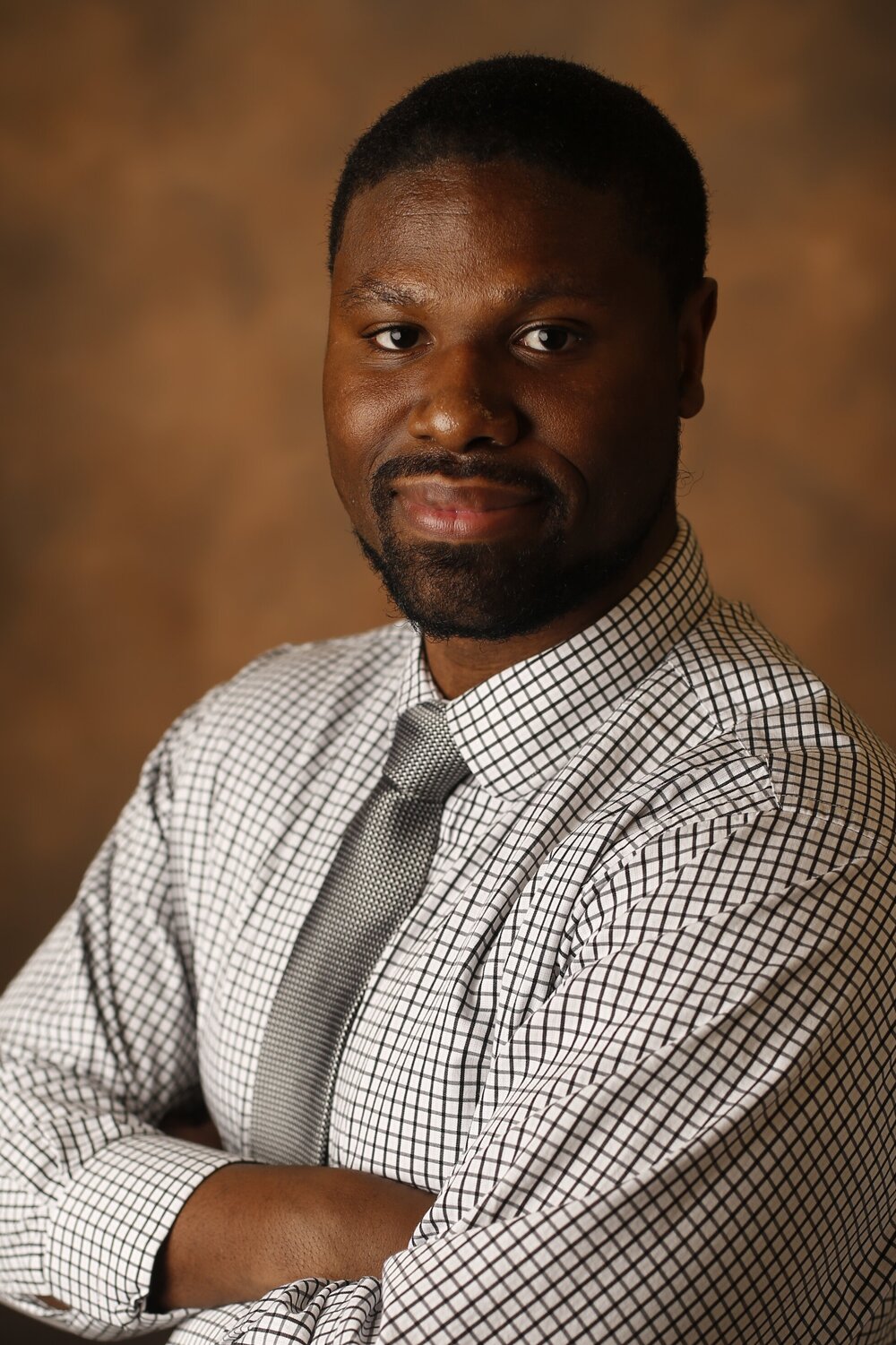
Friday, December 5, 2025
Advancing Stellar Activity and Binary Evolution Science with Rapidly Rotating Giant Stars
The rotational dependence of dynamo-powered stellar activity has been thoroughly investigated for main-sequence stars, but much less so for stars evolved onto the giant branch. In addition to being bigger and brighter, giant stars are generally observed to have negligible rotation rates compared to main-sequence stars and consequently tend to have comparatively weak dynamo action and global magnetic fields. This is generally expected due to angular momentum being carried away by stellar winds before ascending the red giant branch, but if a companion star orbits in close enough proximity, a red giant star can be spun up by tidal synchronization or mass accretion events. As a result, rotationally active giants are unique systems for furthering the understanding of evolved stellar activity and binary evolution processes that impart angular momentum for rotational spin-up. To characterize giant branch rotational activity, we derive an empirical rotation-activity relation using projected rotational velocities and excess near-ultraviolet emission produced by magnetic heating of the chromosphere. We find our relation is similar in structure to those fitted to main-sequence stars, which may suggest a similar dynamo mechanism. Additionally, we find that the most active giants have near-ultraviolet emission that exceeds expectations given their rotation rates and that they are all in synchronized binaries with orbital periods less than twenty days. Lastly, we find tentative evidence that giants approaching breakup rotational velocities are likely formed from planetary engulfment or stellar merger processes, both of which are still not well understood.
Dr. Don Dixon is a first-year postdoctoral researcher at Vanderbilt University and alumnus of the illustrious Cal-Bridge and Fisk-Vanderbilt Bridge programs. His research includes a range of stellar astrophysics topics, with an emphasis on connections between stellar rotation, stellar activity, and binary star evolution. Through these connections, he has helped to characterize several interesting magnetically active binaries and was awarded the most outstanding graduate student publication award by Vanderbilt’s Physics and Astronomy department for his work on developing empirical relationships for rotational activity of red giant branch stars. In addition to scientific research endeavors, Don also acts as the lead organizer for the BLack Academic Support and Advisory gRoup (BLASAR), which serves as a networking apparatus for Black scholars in STEM. He has also previously served on a graduate student and postdoctoral council to support the NASEM Roundtable on Mentorship, Well-being, and Professional Development in their goal to develop a more inclusive and equitable higher education research ecosystem for the sciences. Apart from academia, Don volunteered as project lead for the Open Jails project created by Code for Nashville, where he developed a web scraper pipeline to help identify candidates for nonprofit bail funds in the Nashville-Davidson County area.
Past Guests
JoAnn M. Dickinson, Children's STEM Book Author
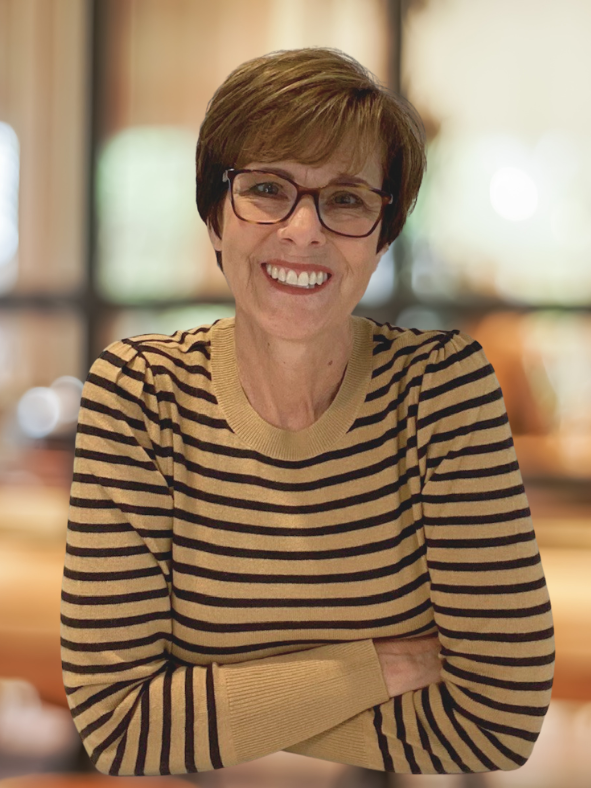
Friday, November 7, 2025
STEM Learning Through Children's Books: Rylee the Young Rocketeer with Author JoAnn M. Dickinson
Join children’s author JoAnn M. Dickinson for an inspiring evening at the Orange Coast College Planetarium as she shares her Rylee the Young Rocketeer series. Through three imaginative picture books, JoAnn introduces young readers to the wonders of space exploration while weaving in the fundamentals of STEM—Science, Technology, Engineering, and Math. Discover how stories can spark curiosity, inspire creativity, and encourage children to dream big, just like Rylee. Autographed books will be available in the Planetarium gift shop following the talk.
At the heart of JoAnn M. Dickinson's work in children’s literature lies a deep passion for inspiring young minds and fostering a love of reading. She believes that stories have the power to shape perspectives, ignite imaginations, and promote empathy among children. Through her writing, JoAnn strives to create engaging narratives that celebrate diversity, individuality, and the beauty of friendship. Her books incorporate essential themes of STEAM (Science, Technology, Engineering, Arts, and Mathematics) and SEL (Social-Emotional Learning), emphasizing kindness, acceptance, diversity, building friendships, and the power of self-confidence. Writing children’s books is a rewarding journey that allows JoAnn to connect with young readers and their families. Each story is an opportunity to explore important lessons that resonate with the hearts and minds of children, helping them navigate the world with confidence and compassion.
YouTube RecordingDr. Kyle Kremer, UCSD
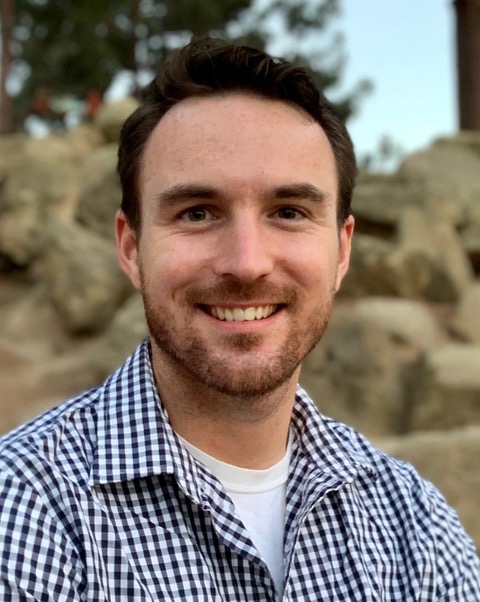
Friday, September 26, 2025
The Dynamic Lives of Black Holes, Neutron Stars, and White Dwarfs in Globular Clusters
The dense centers of globular clusters are home to a whole zoo of exotic astrophysical phenomena. I study the unexpected events experienced by compact objects — black holes, neutron stars, and white dwarfs — within these dense stellar systems. Over the past decade, the groundbreaking detections of gravitational wave signals from merging compact object binaries by the LIGO/Virgo detectors have opened a new window to the cosmos. I will discuss ways these gravitational wave events may have originated in globular clusters, made possible by the unique dynamical activity of compact objects within these systems.
Kyle Kremer is an assistant professor in the Department of Astronomy & Astrophysics at University of California, San Diego. Kremer’s work spans a variety of topics in astrophysics from the detection of black hole mergers through gravitational waves to modeling the N-body dynamics of dense stellar systems like globular clusters to studying the electromagnetic signatures that result when stars are torn apart by black holes. Kremer grew up in Ohio and attended Northwestern University for his undergraduate studies, double majoring in physics and music performance. After undergrad, Kremer spent three years pursuing a career as an orchestral musician (earning a master of music degree at the Colburn School in Los Angeles in 2015) before returning to Northwestern where he completed his PhD in Astronomy in 2019. After finishing his studies, Kremer returned to southern California as an NSF Postdoctoral Fellow and then NASA Einstein Fellow at Caltech and Carnegie Observatories in Pasadena, before beginning his current position at UCSD in 2024.
YouTube RecordingDr. Marie Lau, UCR
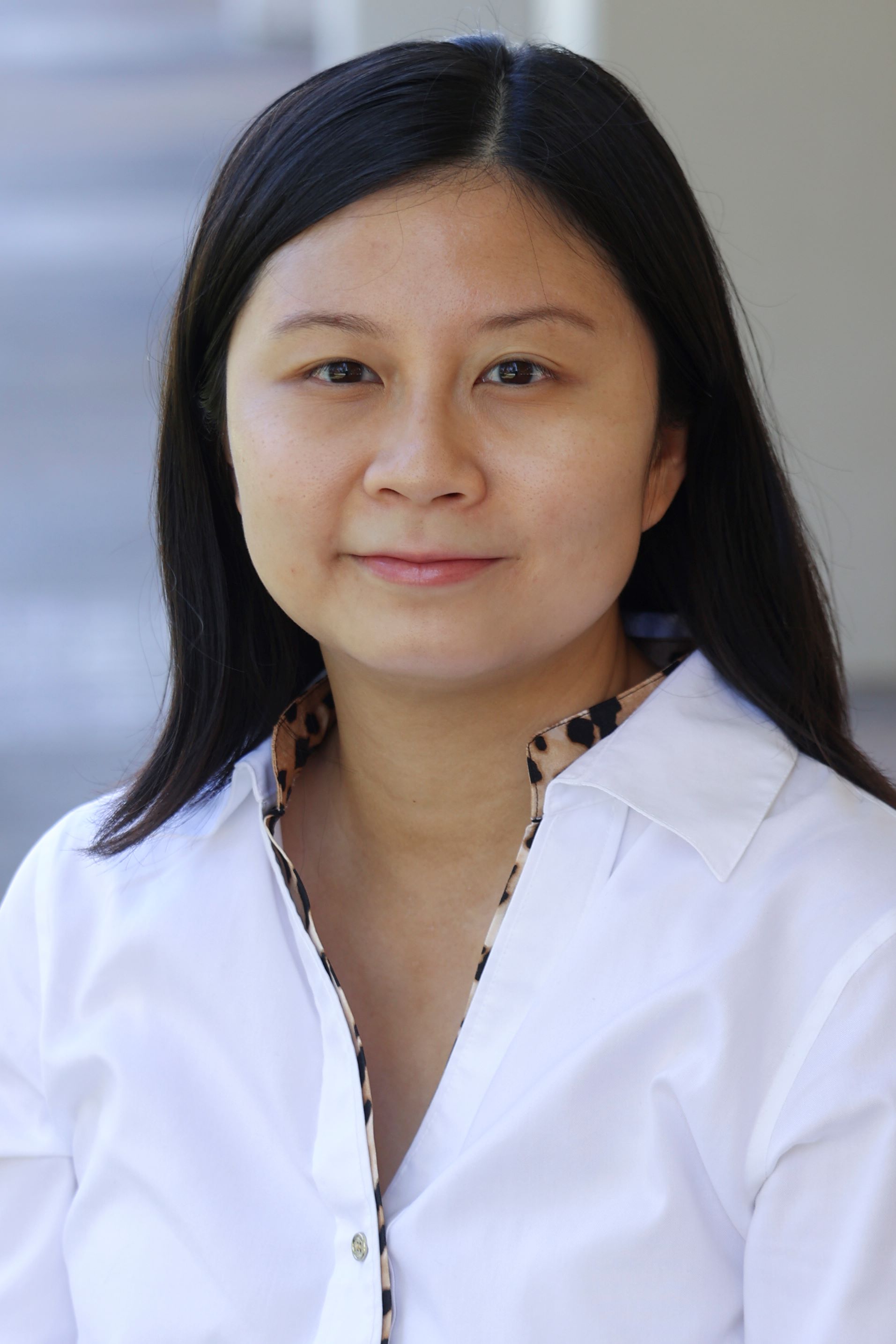
Friday, April 25, 2025
Exploring Quasars: The Brightest Lights in the Universe
Quasars, the brightest known objects in the distant universe, offer extraordinary insights into the lives of galaxies and the supermassive black holes hidden within them. In this talk, we journey through cosmic time to explore quasars—galactic centers shining intensely due to supermassive black holes devouring material from their surroundings. Using large telescopes equipped with advanced imaging and spectroscopy, astronomers now also study reddened quasars which are enshrouded in dust and reveal hidden processes that shape galaxies. We'll discover how quasars serve as "cosmic flashlights," illuminating the secrets of galaxy evolution, from feeding and growing galaxies to powerful winds that influence their future.
Marie Lau is a project scientist/lecturer at University of California Riverside, and she received her PhD from UC Santa Cruz. Her current research interests are dust-reddened quasars and quasar-associated absorption lines, using UV, optical to near IR imaging spectroscopy techniques. She also has experience in high school outreach and undergraduate teaching.
YouTube RecordingCANCELED Dominique Stumbaugh
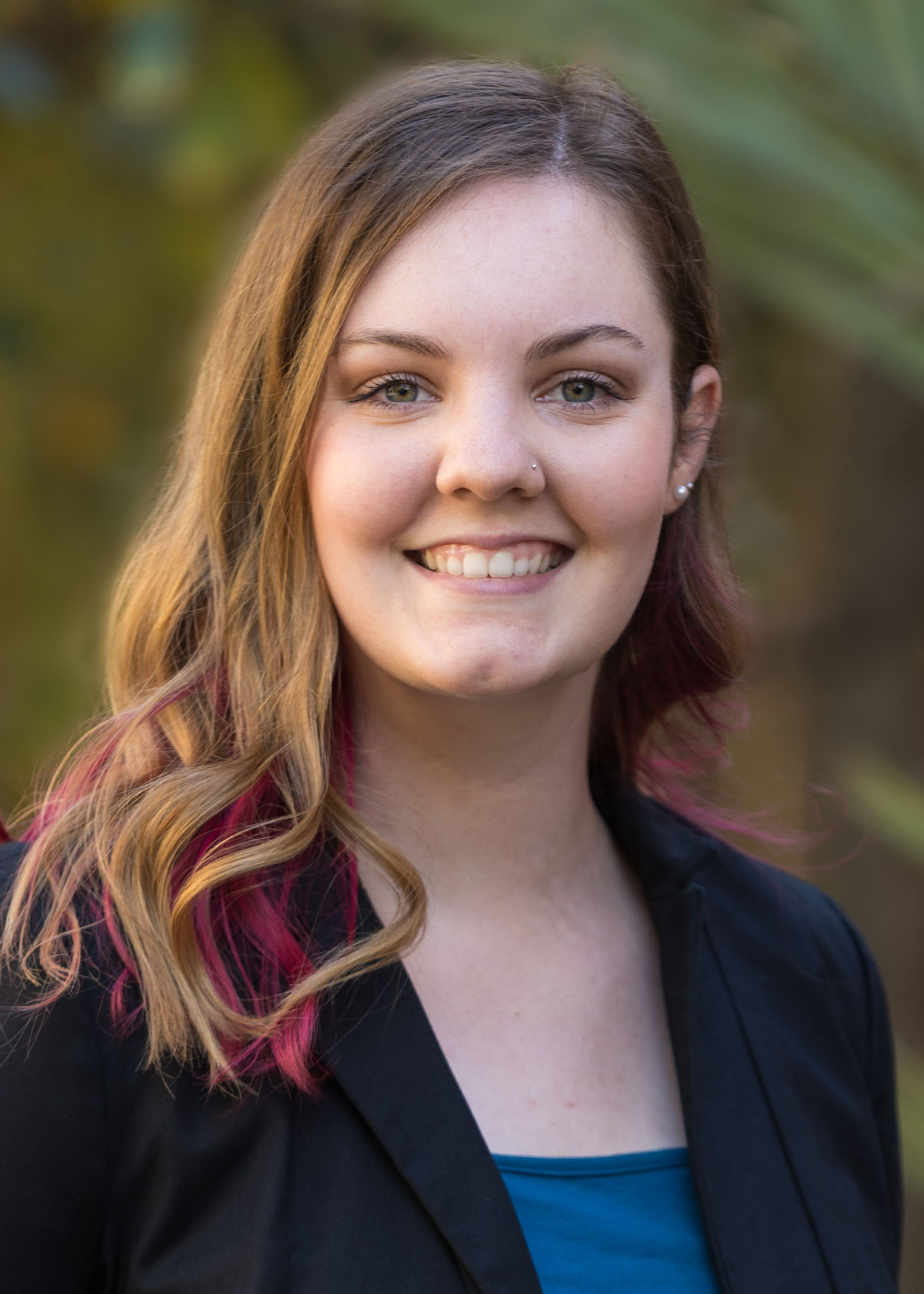
Friday, March 28, 2025
Predicting Near-Earth Space Environment
The Earth's Van Allen radiation belts are dynamic regions of trapped, energetic charged particles. The ability to predict radiation belt dynamics, and thus space weather, has become increasingly important for the broader society due to an increasing satellite infrastructure that is vulnerable to energetic electrons.
In this talk, I will explore the history of the near-Earth space environment, from the discovery of the radiation belts to the present AI-driven age. I will also present my research on a machine learning based model trained on a data set that uses the global coherent nature of the radiation belts to reconstruct electron flux measurements near the geomagnetic equator.
Dominique Stumbaugh (she/her) is a 5th year PhD student in the Department of Atmospheric and Oceanic Sciences researching Earth's radiation belts. She uses a machine learning approach to establish a relationship between high and low-orbit electron flux data to better predict space weather. She is a recipient of the NASA Future Investigators in NASA Earth and Space Science and Technology (FINESST) award. Dominique earned her BS in Astrophysics and MS in Atmospheric Science from UCLA. Throughout the years, she’s interned at NASA JPL, Los Alamos National Laboratory, and the Aerospace Corporation. Currently, Dominique also works at UCLA’s Graduate Writing Center and enjoys consulting on writing. Beyond research and writing, Dominique loves crocheting and baking sourdough!
AJ Juarez
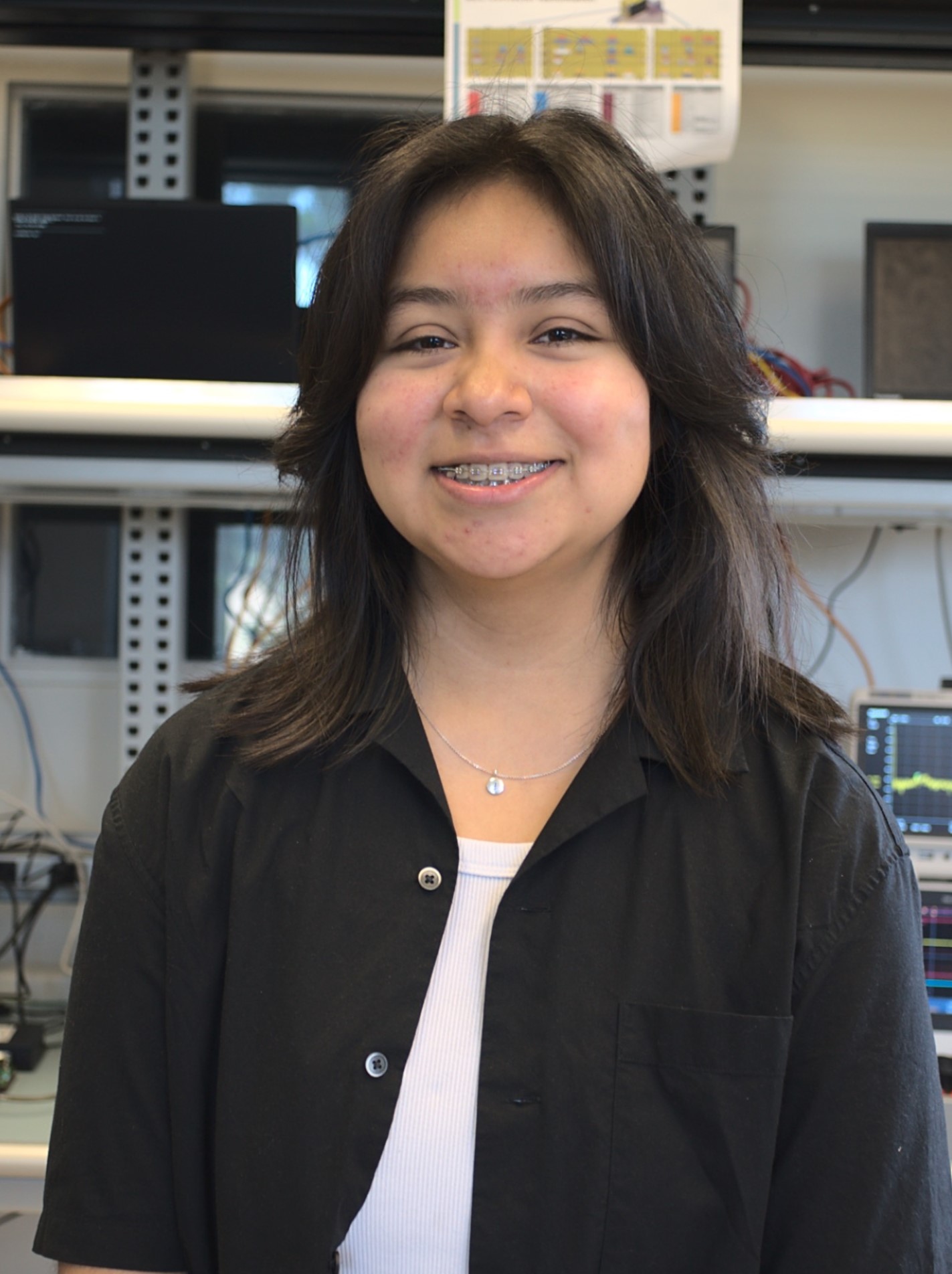
Friday, December 6, 2024
Imposters Among the Northern Lights: Using Emission Spectra to Identify
Enhanced Aurora
The aurora borealis, commonly known as the northern lights, is one of the most striking natural displays and has dazzled and inspired humans since ancient times. Recently, several ‘aurora-like forms’ have been discovered with spectrums that are very different from what is expected, suggesting alternative ways to create light. Among these is a phenomenon known as Enhanced Aurora. To further our understanding of these enigmatic features, we need to be able to accurately identify them in spectral data. This presentation will explore how AJ, as a first-time student researcher, successfully developed an algorithm to identify Enhanced Aurora. AJ will also share their experience working with UC Berkeley’s Space Sciences Laboratory, including the challenges of research and navigating the world of physics as an undergraduate.
AJ Juarez is a physics and astronomy student at Orange Coast College. Since March 2023, AJ has been educating the public by leading K-12 astronomy field trips and presenting science-based shows at the OCC Planetarium. This has solidified their devotion to serving and educating the community, especially groups that are underrepresented in STEM. In August 2024, they completed their work studying Enhanced Aurora with UC Berkeley's Space Sciences Laboratory through the Advancing Space Sciences through Undergraduate Research Experience (ASSURE) program. AJ plans on transferring to a four-year university for a BS in Physics, with the eventual goal of earning a PhD and becoming an astrophysics professor.
Dr. Heather Knutson

Friday, November 1, 2024
The Grand Tour: Exploring the Diversity of Planets Outside the Solar System
We currently know of more than 10,000 planets and planet candidates orbiting nearby stars. Many of these extrasolar planets look quite different than the planets in the solar system, including Jupiter-like gas giants on close-in orbits, `mini-Neptunes’ with puffy hydrogen-rich atmospheres, and rocky `super-Earths’ with masses many times larger than that of Earth or Venus. In my talk I will provide a guided tour of the exoplanet zoo as we understand it today, and describe ongoing efforts to characterize the properties of these distant worlds using both ground- and space-based telescopes.
Heather Knutson is a professor of planetary science in the Division of Geological and Planetary Sciences at the California Institute of Technology. She grew up on Kwajalein Atoll, located about halfway between Hawaii and Australia. Although the island's relatively isolated location was ideal for stargazing, it was not until many years later when she did a summer internship at the Space Telescope Science Institute (home of the Hubble Space Telescope) that she decided to pursue a career in astronomy. Heather obtained her B.S. in physics from Johns Hopkins University and PhD in astronomy from Harvard University, then spent two years at UC Berkeley as a Miller Postdoctoral Fellow before moving to Caltech in 2011.
Dr. Sean Pike

Friday, September 27, 2024
X-ray eyes on the sky: an introduction to high-energy astrophysics
In order to study some of the most exotic phenomena in the universe, astronomers must make use of specialized telescopes that collect energetic X-rays and gamma-rays. These instruments open a window to a violent universe populated by the end-products of stellar lifecycles. I will discuss important topics in X-ray and gamma-ray astronomy, including accretion onto black holes and neutron stars, tidal disruption events, and more. I will also discuss how high-energy astrophysics is carried out, presenting an overview of the unique instruments and analysis techniques which are currently used in the field as well as those in development.
Sean is a postdoctoral scholar at the University of California, San Diego. He received his bachelors degree from Brown University and his PhD from the California Institute of Technology. As a member of the Compton Spectrometer and Imager collaboration, his research focuses on characterization and calibration of gamma-ray instrumentation, as well as spectral and timing studies of transient X-ray binaries. Sean is also an active union organizer who is passionate about making science more just and equitable.
Dr. Paul Robertson
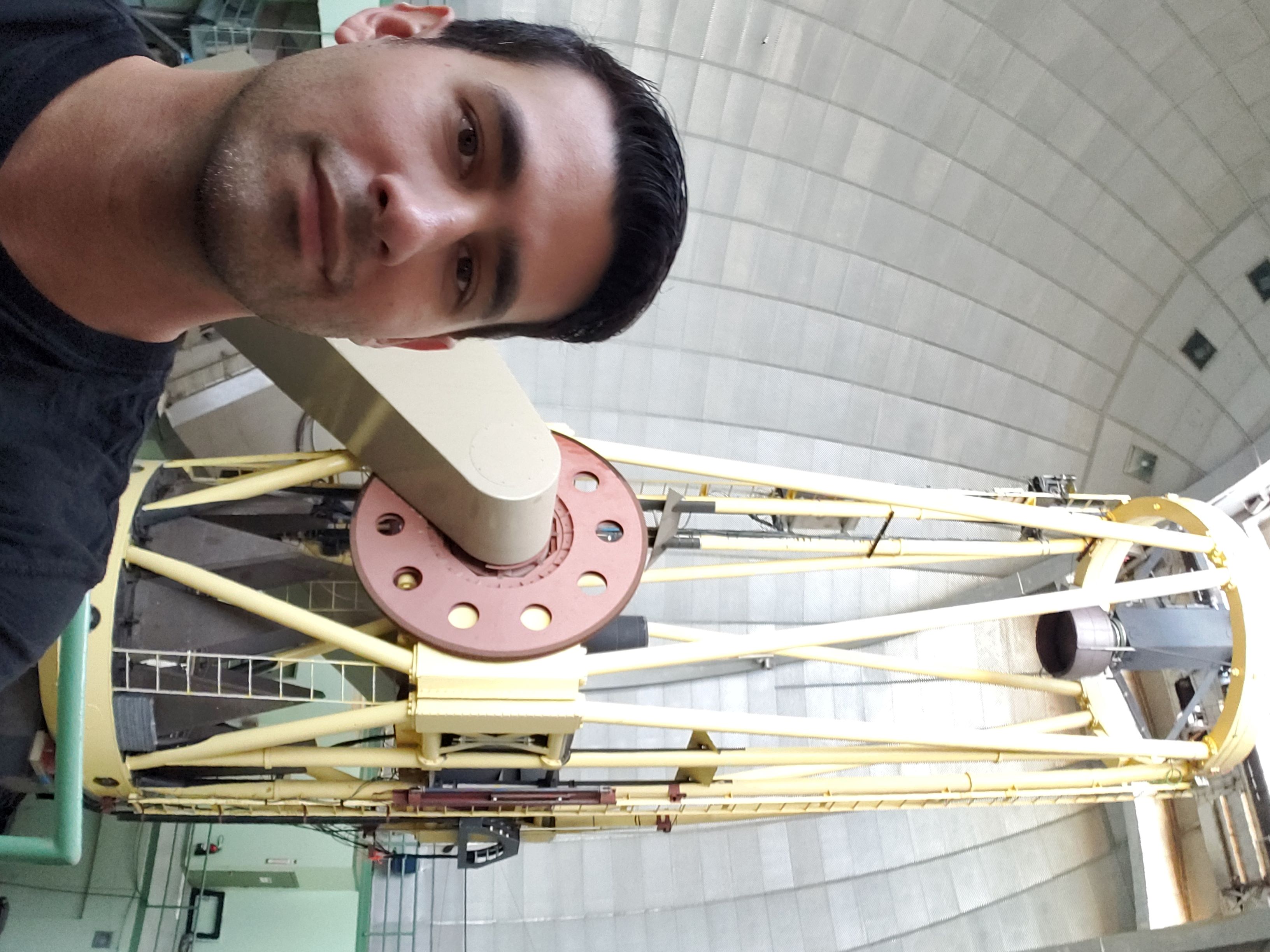
Friday, May 31, 2024
The quest for Earth 2.0: a needle in a Galactic haystack of planets
In the 30 years since the discovery of the first exoplanets--planets orbiting stars other than the Sun--we have learned that planets exist around virtually every star in the Milky Way Galaxy. But while, statistically, we know every star we look at must host planets, knowing the exact configuration of planets around any individual star is a much more challenging problem. Still more difficult is identifying an "Earth twin:" a small, potentially habitable nearby planet where we might expect life to exist. I will describe the enormous challenge of finding such planets, and the incredible technological advances that are making it achievable. I will highlight some of the most exciting exoplanet discoveries to date, and look towards the future, where even more promising results await.
Paul Robertson is an Associate Professor of Physics & Astronomy at the University of
California, Irvine. He received his Bachelor’s degree from the University of North Carolina at
Chapel Hill, and his PhD from the University of Texas at Austin He is an astronomer who
specializes in the detection of exoplanets: planets orbiting stars outside the Solar System. He
has spent the last 15 years pushing the technological and analytical limits of exoplanet
detection, working towards the discovery of Earthlike planets orbiting nearby stars. He is the
Project Scientist of the Habitable-zone Planet Finder Spectrometer and the NEID Spectrometer,
which are two astronomical spectrographs designed for exoplanet detection.
Dr. Joel Zinn

April 26, 2024
High notes from the study of stellar sound waves
Stars across the Galaxy are constantly making a racket --- including our own Sun. Although we can't hear them through space, we can still detect their sound waves through asteroseismic techniques. As one of the only ways to study the insides of stars, asteroseismology has revolutionized our understanding of the inner workings of our stellar neighbors, near and far. I will discuss the most exciting discoveries from mid-century Southern California beginnings through the space-based era of the last two decades, and ranging from the controversy over the Sun's composition to magnetic fields buried in the cores of far-flung giant stars.
Joel C. Zinn received his PhD from Ohio State University, and completed a postdoctoral appointment at the University of New South Wales and a NSF Astronomy and Astrophysics Postdoctoral Fellowship at the American Museum of Natural History before becoming an Assistant Professor of Physics and Astronomy at California State University, Long Beach. His research is at the intersection of stellar and galactic physics, making use of data from taxpayer-funded NASA space-based missions like Kepler and TESS. He is also interested in the intersection of art and astronomy, having developed dance and theatre curricula for the American Museum of Natural History. At CSULB, Dr. Zinn oversees astronomy outreach activities, including the weekly rooftop observing nights, Nights at the Observatory, and has inaugurated a mobile planetarium program to bring astronomy shows to high schools in the community.
Dakotah Tyler (Star Kid)
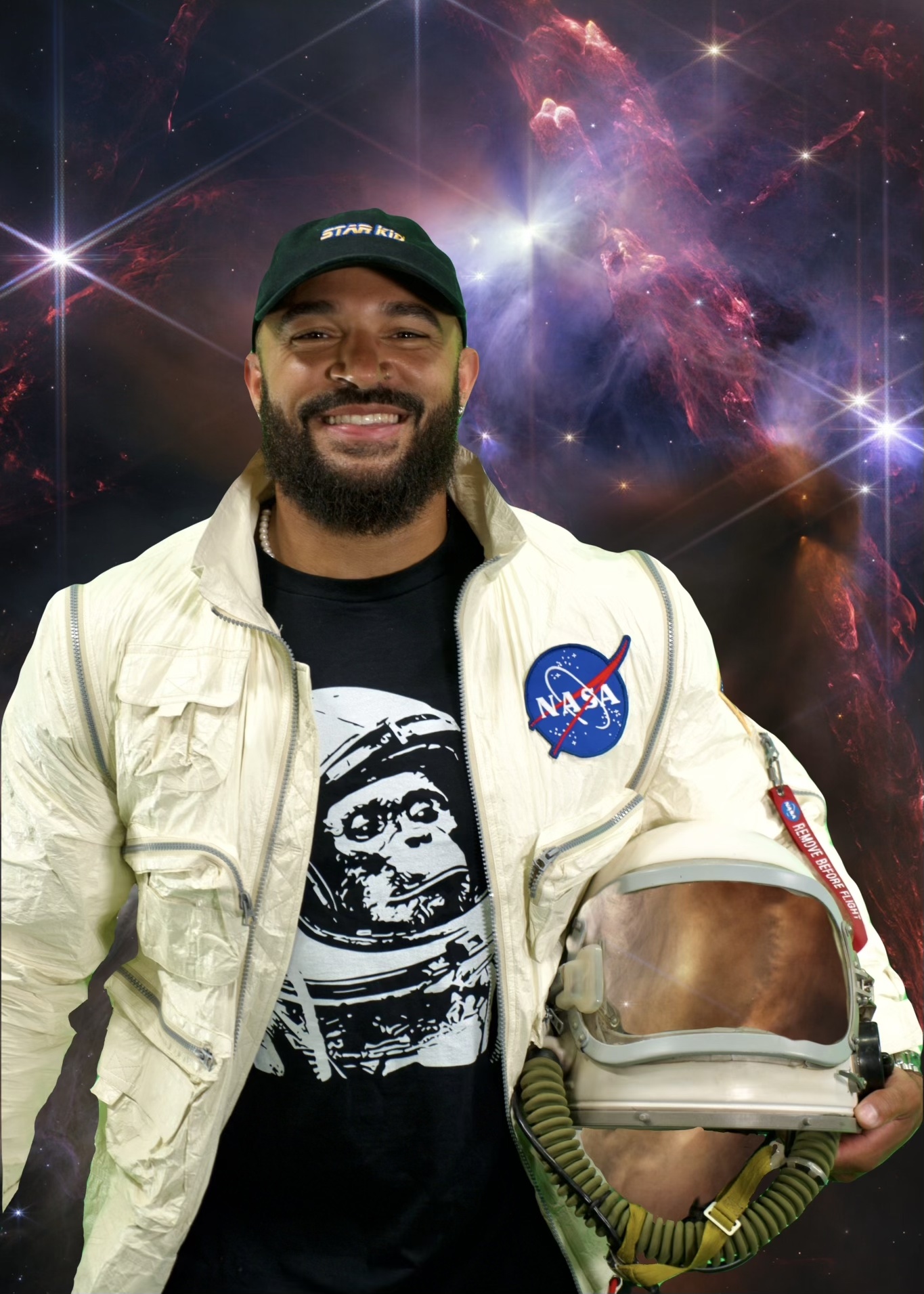
March 29, 2024
From the Gridiron to Galaxies
"From the Gridiron to Galaxies" is an inspiring journey presented by Dakotah Tyler, a former college football athlete turned astrophysicist. This talk traverses Dakotah's unique path from sports to the stars, highlighting his transition into the field of exoplanets. Attendees will embark on an exploration of the ark of discovery of other planets in our galaxy and touch on the latest breakthroughs in our quest to understand the cosmos. Through Dakotah's personal narrative, the presentation will not only shed light on the vast mysteries of the universe but also emphasize the power of resilience, adaptability, and the pursuit of one's true passion.
Dakotah Tyler is an astrophysicist and dedicated science communicator. His research focuses on the dynamic evolution of planets that orbit stars other than the Sun (exoplanets). Before astrophysics, Dakotah was a Division I college football player, but after a career-ending injury, he became fascinated with our expansive universe and decided to pursue a career just to study it. Dakotah is also passionate about sharing the knowledge and wonders of the cosmos with interested audiences of all ages and backgrounds. With over 130,000 followers on TikTok and over 11,000 followers on Instagram, Dakotah is passionate about sharing the knowledge and wonders of the cosmos with interested audiences of all ages and backgrounds.
Dr. Konstantin Batygin
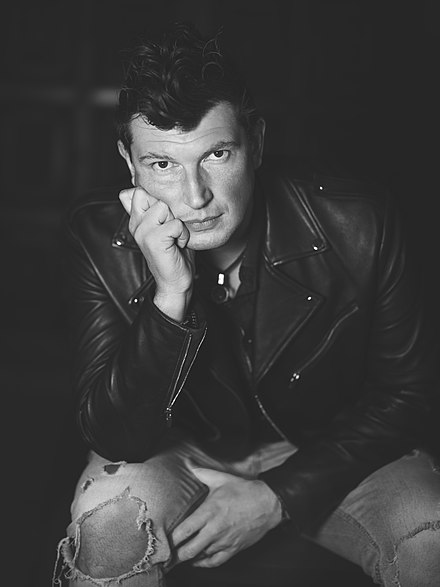
February 23, 2024
Planet 9 From Outer Space: a Status Update
Have you ever looked up at the night sky and wondered what lies beyond the planets we know? For the last 20 years, scientists have been studying a fascinating area in space called the Kuiper Belt - a place filled with icy objects far beyond Neptune. In this mysterious zone, some things don't move as we expect them to. Some of these icy space rocks follow paths that puzzle us and can't be explained just by the influence of the eight planets we are familiar with. One of the most exciting ideas is that there might be a hidden ninth planet, much bigger than Earth, influencing these paths. In this presentation, we will embark on a journey through the evidence that hints at this unseen planet and explore one of the solar system's most intriguing mysteries – the hunt for Planet Nine.
Professor Konstantin Batygin received his bachelor’s degree in Astrophysics from University of California, Santa Cruz in 2008, before pursuing graduate studies in Planetary Science at Caltech and receiving a Ph.D. in 2012. Batygin's research is primarily aimed at understanding the formation and evolution of planetary systems, including our own. Prior to joining the faculty at California Institute of Technology in 2014, Batygin was a postdoctoral scholar at Observatoire de la Côte d'Azur in Nice, France, and Harvard University. When not science-ing, he plays in the rock band The Seventh Season.
Dr. Sabrina Stierwalt
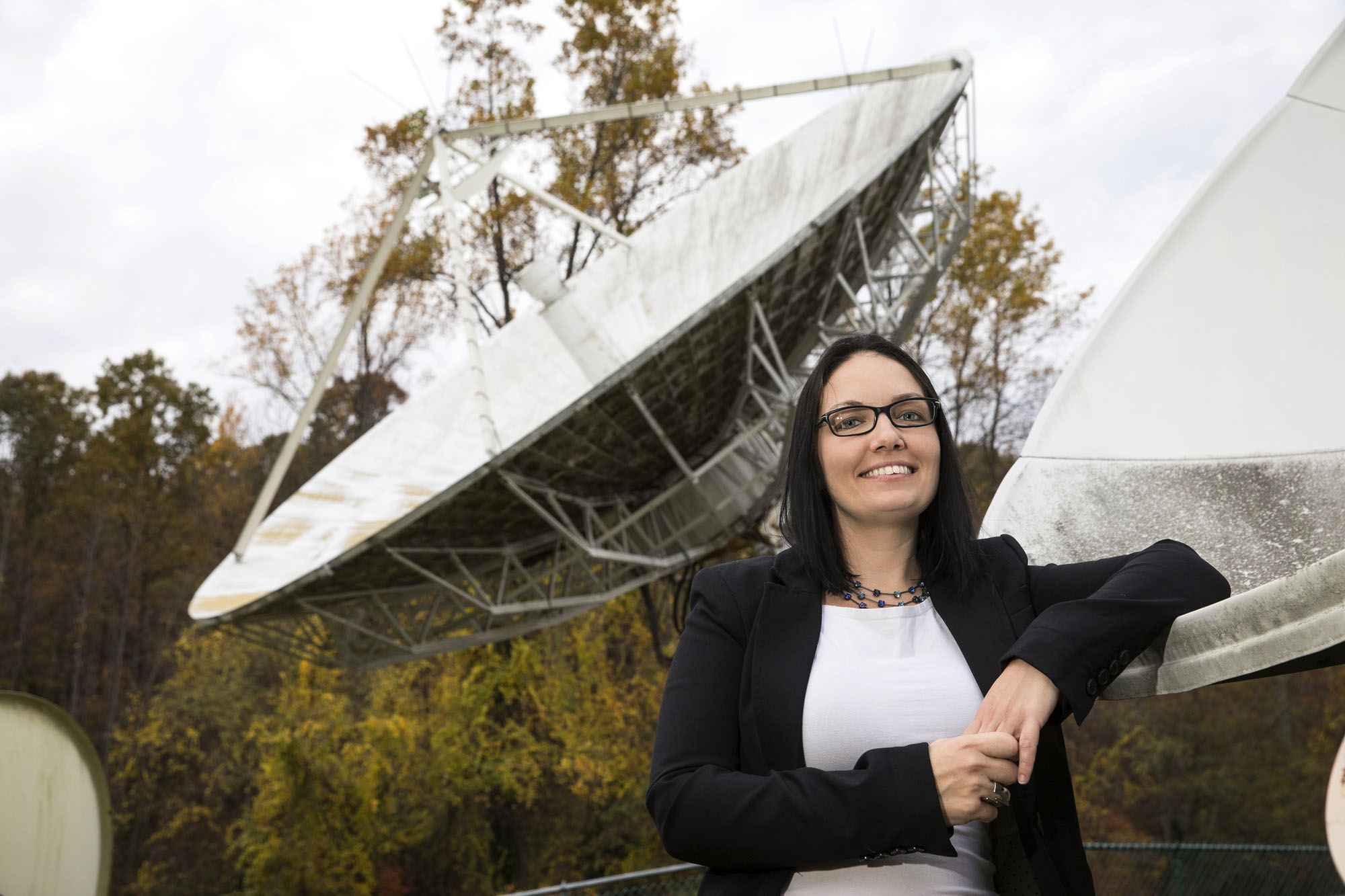
December 1, 2023
Journey to a Black Hole
Escape for an evening with a trip to a black hole. Astrophysicist Sabrina Stierwalt will take us on a tour of the most mysterious objects the universe has to offer. How do we know black holes exist? What would happen if you fell into one? Could a black hole swallow the Earth?
Dr Stierwalt will discuss the latest research, including her own, into how supermassive black holes form, what the biggest black holes look like, and why the universe appears to be missing a population of smaller black holes.
Sabrina is an extragalactic astrophysicist and a professor at Occidental College where she teaches fun courses like quantum mechanics and advanced electricity and magnetism. She researches the physics of galaxy-galaxy collisions which includes the formation of black holes.
Dr. Matt Malkan

October 27, 2023
What's New in the Young Universe: Latest Surprises from the James Webb Space Telescope
A few hundred thousand years after the epoch of Inflation, our Universe has been measured to be remarkably uniform. Fortunately for our existence, it didn't stay that way for long. The excess gravity of slightly over-dense regions slowed their expansion, and eventually caused them to collapse into the first galaxies, forming the first generation of stars (and planets).
Observing this process was the primary motivation for launching the incredible James Webb Space Telescope--the greatest technical challenge ever faced by NASA. Now operating better than we even hoped for, JWST is in the process of rapidly revolutionizing every aspect of astronomy.
Dr. Malkan will focus on his efforts to use JWST as a cosmic "time machine", measuring light from extremely distant galaxies, which has been traveling to us for 12 billion or more years. We are now able to see these young galaxies lighting up the universe, forming stars, merging together, growing giant black holes, and building up the heavy elements required for life!
Christopher 'Chuie' Huie
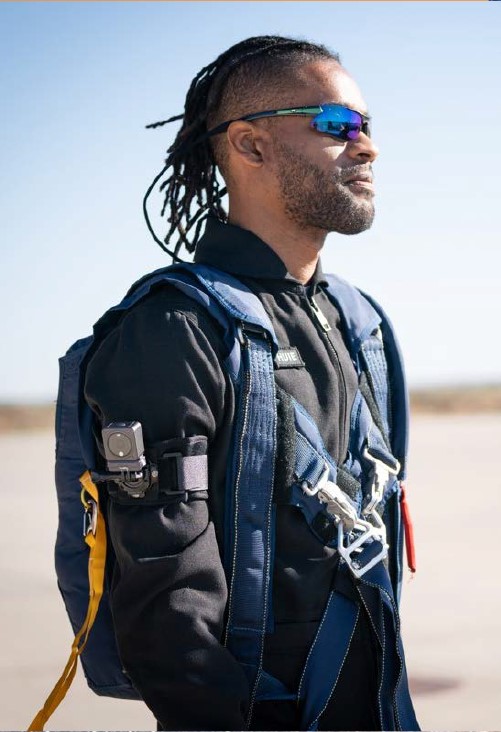
September 29, 2023
In this talk Mr. Huie will recap his contributions to various aerospace industry areas, including rotorcraft, flight simulators, and commercial human spaceflight both as an aerospace engineer and an astronaut. He will provide an overview of the Virgin Galactic Spaceflight experience which he witnessed firsthand as a Mission Specialist on the company's final test flight mission, Unity 25. He will also provide an overview of the Virgin Galactic's Black Leaders in Aerospace Scholarship & Training (BLAST) Program, which aims to increase the number of Black professionals in leadership positions in aerospace.
Christopher Huie, known by his colleagues as “Chuie,” is an astronaut and aerospace engineer. He is the Sr. Manager of Business Insights at Virgin Galactic where he is responsible for Engineering-Business integration and support long range planning by enabling data driven decisions.
Christopher has made substantial technical contributions to the nascent commercial human spaceflight industry. Joining Virgin Galactic in 2016, he led the Flight Sciences External Loads Engineering discipline for 6 years and is intimately familiar with Spaceship VSS Unity and Mothership VMS Eve, which together make up Galactic’s Spaceflight System. He has worked on nearly every component of spaceship and mothership design, helping to ensure both structural integrity and mission success. Christopher’s thoughtful approach to both his work and to those he works with has set him apart as a leader.
On May 25th, 2023 Christopher flew as a Mission Specialist on Unity 25, Virgin Galactic’s final test flight, paving the way for Galactic’s first commercial mission, Galactic 01 in June of 2023. A Jamaican-American, Christopher is among the first 650 humans who have ever been to space and is only the 19th Black astronaut in the world.
Before joining Virgin Galactic, Christopher spent over 5 years at Bell Flight engineering on various rotorcraft programs including the Bell V-280 Tiltrotor and as a Simulation Engineer developing and certifying Flight Crew Training Simulators around the world. Christopher is originally from Orlando, FL and received his B.S. in Aerospace Engineering from the University of Maryland, College Park (UMD). While at UMD, Christopher was a scholar in the QUEST Honors Program, the Igor Sikorsky Scholarship Program (ISSP), and conducted undergraduate research in the Alfred Gessow Rotorcraft Center as part of the National Science Foundation’s LSAMP Undergraduate Research Program. As part of the ISSP, Christopher also completed several internships at Sikorsky Aircraft in Mechanical Diagnostics & Prognostics and Aerodynamics.
In 2022, Christopher was inducted into the inaugural class of the University of Maryland Clark School of Engineering’s Early Career Distinguished Alumni Society, which recognizes alumni under 40 years old for their leadership, innovation, service, and entrepreneurship.
Christopher is the 2021 Together We Can: Change winner, an honor bestowed by Virgin Unite, The Virgin Group’s outreach and philanthropy organization, to those who are working to improve their communities and change the world around them for the better.
Christopher is a science enthusiast and loves inspiring and mentoring the next generation of students interested in Science, Engineering, and Aerospace. He is an active member of Virgin Galactic’s outreach initiative, Galactic Unite, and the Co-Founder and Coordinator for its Black Leaders in Aerospace Scholarship & Training (BLAST) Program, a fellowship program which aims to increase the number of Blacks in leadership positions within the Aerospace Industry. In his free time, Christopher enjoys being a dad to his 1-year-old daughter, learning, reading, plant-based cooking, rocking climbing, DJing, listening to music, Seinfeld reruns, Star Trek, and scheming up crazy space business ideas.
Instagram: @AstroChuie
Prof. David Kirkby and Dylan Green
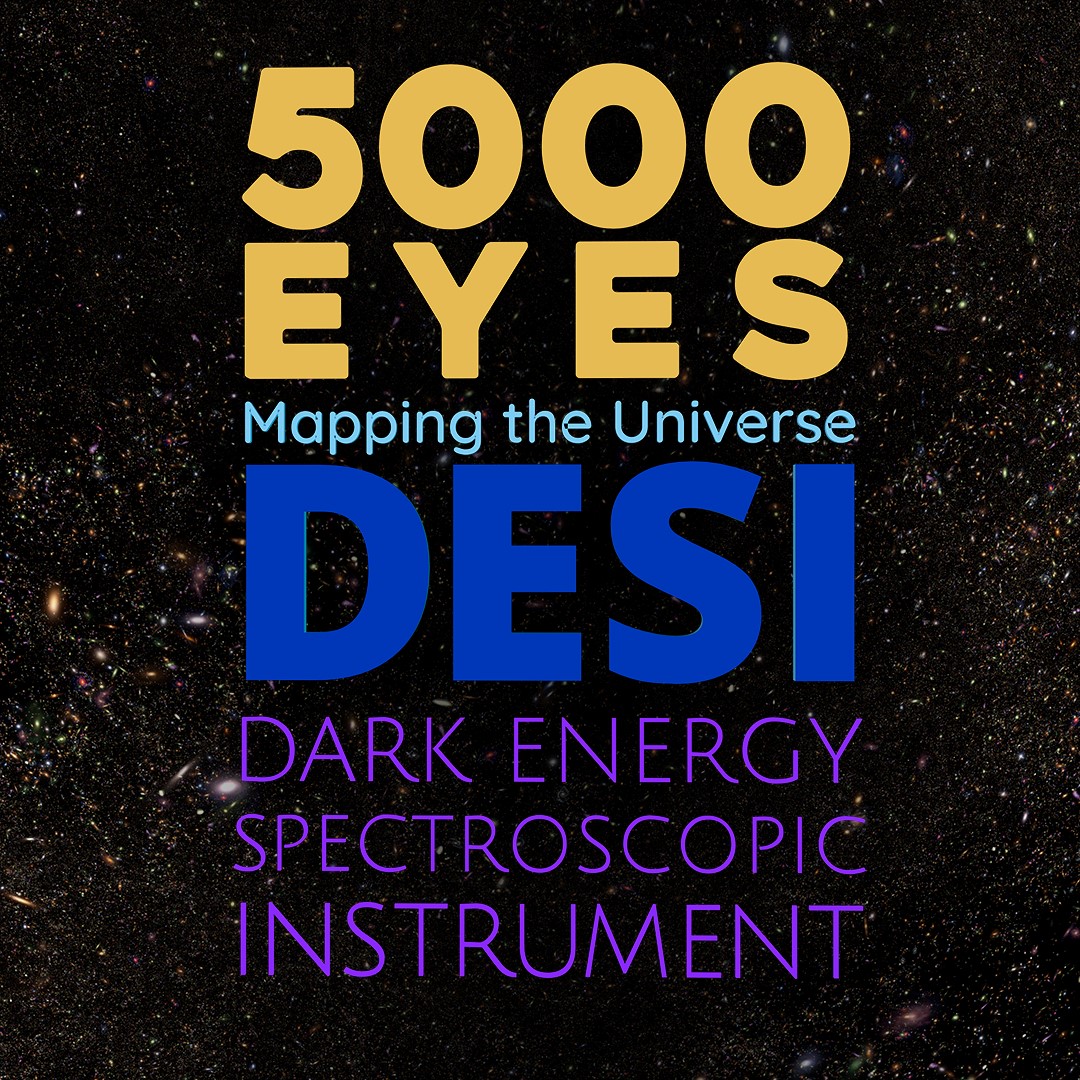
May 26, 2023
Join Professor David Kirkby and Dylan Green from UCI for the OCC premier of the full dome planetarium show 5000 Eyes: Mapping the Universe with DESI and the following lecture! The Dark Energy Spectroscopic Instrument (DESI) consists of 5000 robotic fiber positioners that capture the light from distant galaxies and quasars to measure their distances and build the most accurate 3D map ever of the cosmos. Scientists will use this map to measure how the universe has expanded in the past and learn about the mysterious role of dark energy in accelerating this expansion.
David Kirkby
David lived in England, Canada and France before settling in California and joining the faculty at the University of California, Irvine. He was originally a particle physicist, studying the smallest building blocks of the universe with accelerators at CERN, in Europe, and SLAC, at Stanford University. He now studies the origin and evolution of the universe on the largest scales, with a
particular focus on understanding the cosmic acceleration that drives the universe to expand faster and faster each day. A lot of his day-to-day work involves data analysis, visualization, machine learning and astronomical instrumentation.
Dylan Green
Dylan was born in South Africa before moving to California at the age of 7. He received his Bachelor's of Science at the University of California, Irvine, where he is now completing his PhD in Physics with a concentration in astrophysics. His daily routine includes analyzing data and tweaking machine learning algorithms to improve our understanding of the universe, working for Prof. David Kirkby.
Dr. Steven W. Barwick
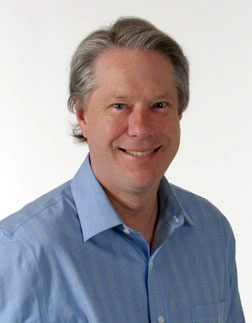
April 21, 2023
In the early 1990's, physicists began to consider the possibility of observing neutrinos from astrophysical sources to complement the traditional tools of astronomy, which relied on the observation of light and other variants of electromagnetic radiation. Being uncharged, neutrinos travel in straight lines (like light!) so they point back to the source that created them, but interact with other matter far more rarely than light. This property gives astrophysicists a unique unobstructed view of the core of powerful sources since neutrinos can escape in many situations where light is trapped. In addition, once neutrinos are made, they will travel freely to us. The downside - neutrinos are very difficult to detect. I will discuss the rise of neutrino astronomy, and then focus on what comes next.
After receiving his Ph.D from UC-Berkeley in 1987, Professor Barwick joined the faculty of the department of physics and astronomy at UC Irvine in 1991. He has participated in experiments flown on massive balloons to measure high energy cosmic rays and antiparticle. For most of his career, he has worked to develop a new astronomy that observes neutrinos. He led the AMANDA project at the South Pole, which was the predecessor to the IceCube high energy neutrino observatory, and the ARIANNA high energy neutrino project, located in Antarctica. He was elected fellow of the American Physical Society in 2002, and currently chairs the Yodh Prize committee, which recognizes the most important contributions to the fields of particle astrophysics and cosmic rays.
Dr. Michael Bouchard
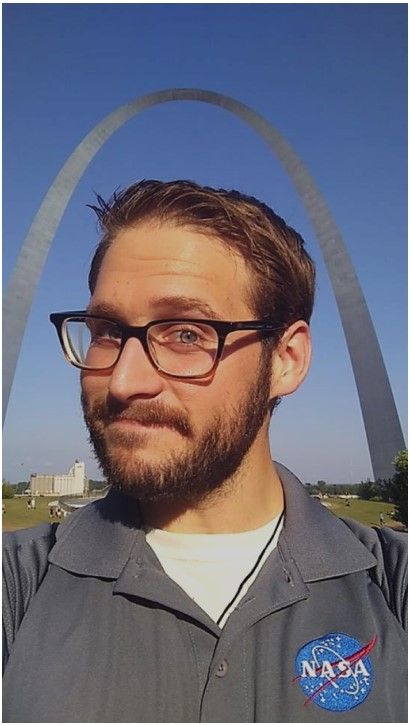
March 24, 2023
People have been studying and charting the planets movements across the sky for thousands of years. Every new advancement in space exploration technology, from telescopes, to space probes, to landers and rovers, uncovers a new face of the red planet. And now we stand poised for our most ambitious attempt yet, to return samples from Mars!
Dr. Michael Bouchard loves two things, rocks and rovers!
Calling St. Louis Missouri home, he began his own journey of discovery camping and hiking across the country with his family and scouts.
Which turned into a love for the outdoors and asking questions about the world around him.
This led him to study Geology and Geophysics at Missouri University of Science Technology.
While there he discovered his other passion, rovers! He knew he wanted to explore other planets as well as Earth, so he started a robotics design team that designs and builds Mars rovers that compete in international competitions.
After his undergrad Michael continued his journey of discovery at Washington University in St. Louis,
where he completed his Masters and PhD in Earth and Planetary Sciences, specializing in Martian geology.
Michael has now worked as both a scientist and engineer on three Mars rovers with
NASA's Jet Propulsion Laboratory including a three-year stint as a member of the science team on the Opportunity rover.
He is currently a Payload Systems Engineer, working on the ambitious and incredibly exciting
Mars Sample Return mission. Which you may just hear something about today!
Emmanuel Masongsong

February 24, 2023
Learn how winds and storms from the sun create weather in space, and how it affects our daily lives, technology, and the future of space exploration. Discover how space weather can influence planetary habitability: creating water on the Moon and planets, and forming the molecules and conditions that could nurture life. Like extreme Earth-based weather, space weather can pose hazards to astronauts and space tourists, and can even disrupt our communications and electrical grid here on the ground. By studying space weather, we can better prepare and eventually predict its potential harms, as well as understand how stars interact with the planets and moons in their solar systems.
Emmanuel Masongsong has been a Program Manager with the Experimental Space Physics group in the UCLA Department of Earth, Planetary, and Space Sciences, since 2011. He coordinates several NASA satellite missions, manages lab facilities, and is passionate about science outreach, specifically increasing diversity and accessibility in STEM education. Having worked in viral genetics and cancer research for over a decade before his current role, he feels that studying any area of science can open doors and prepare you for almost any career. He is also a volunteer JPL Solar System Ambassador, presenting his team's work on space weather and Heliophysics at schools and events nationally, explaining the importance of Earth's magnetism and solar activity in our daily lives.
Katrina Carter-Journet
December 8, 2022
Dr. Jon Aurnou
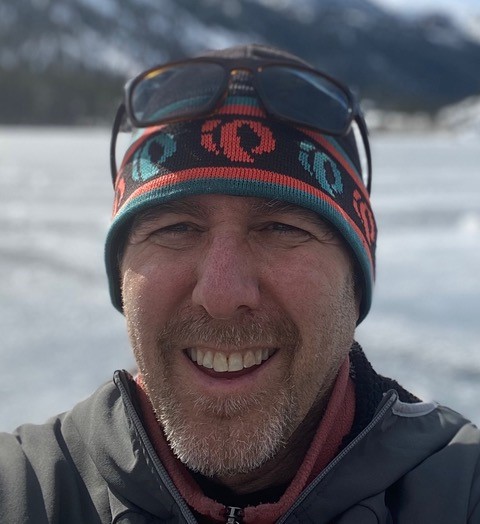
November 12, 2022
Jon Aurnou is a professor of geophysics and planetary physics in UCLA’s Department of Earth, Planetary and Space Sciences. There he studies large scale turbulence in deep planetary atmospheres, sub-surface oceans, and in liquid metal planetary cores. In addition, Aurnou is one of the co-founders of the DIYnamics Project that seeks to provide accessible hands-on tools for teaching core geoscientific concepts to learners at all levels.
In this talk, we will carry out a suite of live fluid dynamics demonstrations using DIYnamics hardware kits in order to better our understanding of the essentials flows observed in planetary atmospheres and oceans and which underlie a given planet’s climatic conditions. Using GoPros and cellphones, we will project images of our DIYnamics experiments onto the planetarium dome, providing an unheralded opportunity to connect laboratory scale models to their complementary planetary flows.
Dr. Jennifer Burt

October 27th, 2022
Dr. Burt is a scientist at NASA's Jet Propulsion Laboratory where she focuses on the detection and characterization of small planets orbiting bright, nearby stars using telescopes around the globe. She now works inside NASA's Exoplanet Exploration Program Office at JPL to support the radial velocity community as we work towards the next big goal of detecting Earth-like planets orbiting in the habitable zones of Sun-like stars.
Dr. Burt's presentation will explore how the exoplanet landscape has evolved rapidly over the last 25 years, as we have moved from knowing about just a handful of planets orbiting outside our solar system in the late 1990s to now having more than 5000 confirmed exoplanets in 2022. She will discuss the recent advancements in both science and technology that are enabling the discovery and characterization of hundreds of small planets orbiting bright, nearby stars, as well as touch on the steps required to proceed from our current science capabilities to NASA's future goal of directly imaging Earth-analog planets, Earth-like planets orbiting in the Habitable Zone of Sun-like stars.
Dr. Abhimat Gautam
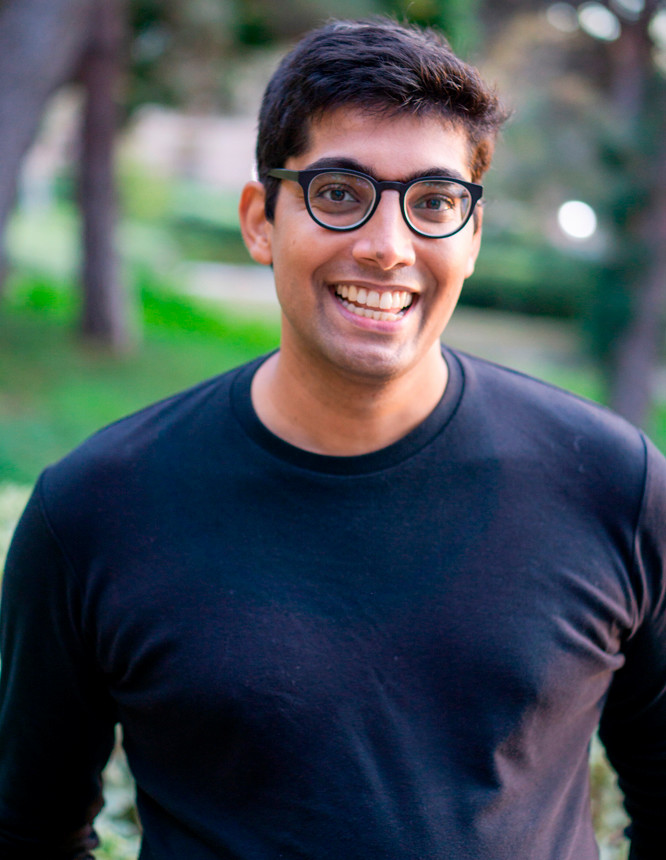
September 23, 2022
Dr. Gautam is a postdoctoral researcher at UCLA, studying the star population and the dynamical environment near the supermassive black hole in the Milky Way Galactic center. He uses observations collected with the Keck telescopes located on Maunakea in Hawaii and the Hubble Space Telescope to study the stellar populations at the Galactic center.
Dr. Gautam's presentation will discuss how to find the center of the Milky Way in the night sky and how astronomers observe the center of the galaxy with some of the most powerful telescopes on Earth. The Galactic Center is a unique and interesting environment and laboratory, filled with many recent and exciting discoveries, including the supermassive black hole which won the 2020 Nobel Prize in physics.